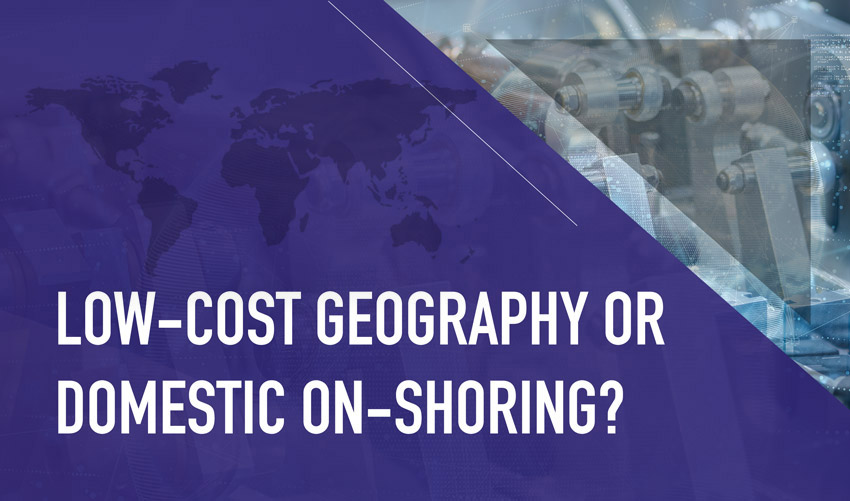The worldwide Coronavirus pandemic has caused supply chain disruptions in every sector and region affected by the outbreak. No one is exempt from this, and the interruption is still wreaking havoc on the world’s ability to maintain supply continuity.
One of the false narratives that have emerged as a result of the epidemic is the idea of insourcing or on-shoring work that had previously been outsourced to low-cost areas to save money. The premise says that by having products and services work done closer to home, all of these supply difficulties will be resolved somehow.
Although it should be obvious, the folly of believing that domestic sourcing is somehow superior to low-cost sourcing should be immediately evident. The epidemic has struck without discrimination. Every part of the world has been affected by the epidemic. No one, no place, no firm, no sector, no government, and no nation will be able to escape the horrors of the epidemic on their own.
Relocating work from Asia to the United States to avoid the epidemic will not influence supply. It would increase job opportunities for firms headquartered in the United States. Additionally, when people think they lack control over their life, having this activity closer to home may create an illusion of stability and authority. However, the US is just as susceptible to the virus as many countries from which they would be sending labor.
Apart from the fact that the pandemic’s spread casts doubt on the viability of on-shoring as a supply solution, the basic reasons for outsourcing and offshoring in the first place remain very much alive. Less-priced goods and services remain critical, and as we’ve seen, the cost of commodities has risen dramatically as a consequence of the pandemic, making it tough for buyers to swallow.
Onshoring should not be considered just for the sake of averting a pandemic in one or more geographic locations since this is an inadequate rationale. There are, however, many other considerations that may make some forms of repatriation of outsourced workers more appropriate under specific situations.
To better understand the issue and come up with a common sense-based solution is, first understand the concepts of nearshoring, offshoring and onshoring (which are just different angles of the same equation).
The location doesn’t affect the geographical location of your outsourced resource or the quality of the specialists who will work on your project. That is due to the standards set by their parent firm in terms of recruitment, training, quality control, and management. These differ from country to country.
However, the geographic location of those experts has a significant impact on many other crucial parameters. Many factors significantly impact the success rate of an outsourced agreement.
These include:
- Cost of onsite, virtual, or hybrid collaboration with an in-house team based on location
- In terms of time zones,
- Skill sets are available at the time of your request.
- If management meets with the outsourcing partner in person, they will have to spend time and money on their travel.
- Tax and legal systems
What Is Nearshoring?
Nearshoring is the practice of outsourcing to a nation that is physically near your own and has a time zone that is anticipated to be within 1-3 hours of your own, as opposed to offshore outsourcing. Nearshoring is often used to refer to Eastern Europe and Turkey in the context of western European organizations (possibly also North Africa for some countries).
What Is Offshoring?
When you outsource to a country other than those deemed nearshoring destinations, you are referred to as offshoring. A greater geographical distance between offshore destinations will almost always result in a time zone difference of more than 3 hours between the two locations.
What Is OnShoring?
Onshoring is the practice of outsourcing that is headquartered in your native country. In many ways, it’s similar to contracting, except that the specialists are hired full-time by the outsourcing partner rather than being freelancers with their unique contracts.
Now that we have an idea of the concepts driving the discussion of what is better and should be, the concept that leads business decisions will always boil down to not just Low-Cost Geography or Domestic On-shoring.
However, practically speaking, creating extremely resilient and strong supply chains should be a prominent concern in sourcing priorities and choices these days, regardless of the industry. The soundness of the sourcing solutions will impact how robust a Supply Chain will be.
We anticipate that a combination of outsourcing to low-cost countries and on-shoring will be necessary to achieve this level of robustness. This would allow for the realization of the benefits of both outsourcing and on-shoring simultaneously.
As we have all witnessed throughout the epidemic, the imbalance created by favoring one sourcing technique over another will prolong the vulnerability of all supply chains, as we have seen firsthand.

Resourceful and innovative Marketing Pro, with 20+ years of progressive experience in the marketing and creative technology industry. Responsible for digital and traditional marketing efforts that promotes brand awareness, increases engagement, and drives revenue.



















